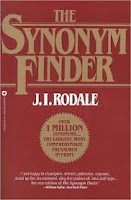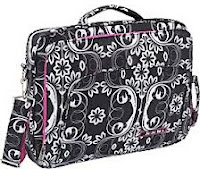by Marilyn Hilton
You're in the writer's waiting room: you just turned in the final proofread on your latest novel, or you just emailed a requested full manuscript to your dream agent or editor, or you’re between contracts, or you’re just plain discouraged over the waiting and wondering of being a writer. And you need to pay the electric bill or make the tuition payment or fix that growing crack in the ceiling.
You decide to take a part-time or temporary job to finance these needs while you’re waiting for real career to get moving. But you don’t want to wait tables or stuff envelopes or make sales calls. You’re a writer, and you want to write.

A few years ago I did a survey of freelance writing and editing jobs and came up with a nice list. Below is a subset of the most relevant jobs. (I left out fortune cookie writer, cereal box copywriter, and “Real Housewives” blogger—even though it’s my secret addiction.) So, if you’re thinking about taking on some freelance writing or editing work, this list might give you some ideas.
A note about the pay rates: They’re average, and depend on the writer’s experience and the job’s location.
Advertising copywriter
Writes advertising copy for a variety of clients’ products, services. Meets with the account executive, creative director, and artist to better understand the client’s needs, and then develops a creative strategy to meet those needs. A copywriter might write for print, as well as other media (such as radio, TV, and the web).
Skills: Ability to write clearly and persuasively, and think outside of the box.
Pay: $42K–$60K annually.
Corporate or marketing communications writer
Produces documents for print and the web about the organization to employees, clients, and customers. Includes in-house and customer newsletters, articles, journals, and web content, press releases, corporate backgrounders and white papers. Prepares technical overviews of products and services. Works with copyeditors, designers, production specialists for accuracy of information and consistency of style. Establishes relationships with press, trade, and industry contacts.
Skills: Degree in journalism, marketing, English, or communications, or experience in a technical writing or editing or marketing communications environment.
Pay: $50K annually.
Marketing communications editor
Edits brochures, white papers, data sheets, web copy, anything else the client company creates. Edits for errors in punctuation, grammar, and style, for consistent voice, and that style adheres to company’s standards. May provide developmental editing, copyediting, line editing, and proofreading of project at different stages of production cycle. Requires excellent grammar skills (current) and people skills, ability to be tactful, flexible, detail oriented.
Skills: Requires specialized training through classes and certificate programs (many colleges and extension programs offer them), and on-the-job training.
Pay: As freelancer, $30–$75 hourly; $52K annually.
Education writer
Writes theme- and subject-based workbooks, reading books, and other materials for K-12 classroom use on work-for-hire basis. Requires curiosity, love of teaching, love of research, and the ability to explain concepts in pictures and text.
Skills: Knowledge and/or experience in subject, degree and/or experience in education, teaching, or curriculum development, knowledge of education standards.
Pay: Varies by publisher/packager.
Proposal writer for new business/business development (corporate)
Develops and writes new business proposals to potential clients based on client/customers’ requests and needs. Also develops and writes contract proposals for new clients/customers. Commonly works in the financial planning and investment, insurance, and health care industries. This job is detail oriented and deadline driven. It requires an understanding of the customer. Also requires good people skills, meticulous research skills, ability to translate complex facts and statistics into understandable language.
Skills: Excellent persuasive, expository, and technical writing skills. Excellent research skills. Knowledge of industry and RFP (request for proposal) database use and management.
Pay: $45K–$100K annually.
Grants proposal writer (nonprofit)
Develops and writes proposals to solicit funds for projects or services provided by organization. Commonly works in education, religious, and volunteer-based organizations. Researches funding sources and is familiar with various organizations and foundations that administer grant funds. This job is detail oriented and deadline driven. It requires an understanding of the customer. Also requires good people skills, meticulous research skills, ability to translate complex facts and statistics into understandable language.
Skills: Excellent persuasive, expository, and technical writing skills. Excellent research skills. Knowledge of industry.
Pay: $25K–$45K annually.
Greeting card writer
Writes messages, poems, and verse for greeting cards. May suggest art. Develops ideas according to the publisher’s guidelines; works with editors. Requires patience, persistence, love of words, and the ability to work independently.
Skills: No formal education needed, but an understanding of how to write a personal message with a command of language is required. For inspirational card writers, understand the quoted Bible verse in context.
Pay: $25–$100 per idea. Sometimes additional payment if you develop the card’s graphic design.
Public relations consultant
Working for the client or employer, identifies story ideas for the trade, business and general press. Researches, writes, or edits articles, press releases/fact sheets, backgrounders; follows up press releases with press contacts, tracks news stories and company profiles in the press; develops relationships with press. Consultants may also do strategic planning, writing and supervising video productions. Requires good listening skills, flexibility, resourcefulness, the ability to work independently, make good recommendations for the organization, and be businesslike, professional, and responsive to customers’ needs.
Skills: B.A. in journalism, communication, or marketing. Accreditation through a professional organization like PRSA (Public Relations Society of America) is extremely helpful.
Pay: $100–$250 hourly.
Resume writer
Writes and edits client resumes and cover letters, from scratch or using existing material. Requires strong business writing skills with a marketing focus (because a resume sells the applicant), good people skills, an ability to turn excellent product around quickly.
Skills: Experience or background in marketing, finance, advertising, law, IT, legal, human resources, military, or business helpful.
Pay: $20–$25 hourly.
Freelance editor
Performs developmental editing, line- and copy-editing, and proofreading on manuscripts prior to publishing. May also do indexing. Clients can be authors, publishers, or corporations. Requires excellent time management and project management skills, good people skills, attention to detail, and a desire for excellence.
Skills: Excellent editing and proofreading skills; knowledge of how story works (for fiction); excellent knowledge of language and grammar.
Pay: Basic copyediting: $25–$50 hourly; In-depth line-by-line copyediting: $30–$75 hourly; Developmental/content editing: $30–$100 hourly; Ghostwriting/coauthoring rates: vary.
Proofreader
Proofreads, reviews, and edits materials for accurate use of grammar and content. Corrects grammatical, typographical, or compositional errors in the original copy. This job is detail oriented and deadline driven.
Skills: Excellent spelling and grammar skills; knows proofreading standards. Knowledge of the subject matter or industry is helpful.
Pay: As freelancer, $2–$4 per page; $25–$30 hourly; $36K annually.
Indexer
Creates an index from electronic manuscript or typeset page proofs provided by the client (author, publisher, or corporation).
Skills: No formal degree required, but expertise in the subject matter is desirable. Requires excellent language skills, ability to focus on details, accuracy, excellent organization skills, and excellent time management skills. Requires curiosity, accuracy, attention to detail, ability to work independently and be disciplined.
Pay: $25–$30 hourly, up to $50K annually.
There you have it--a short list of freelance writing and editing jobs for your waiting room.
What jobs have you done? What jobs would you add to this list?































